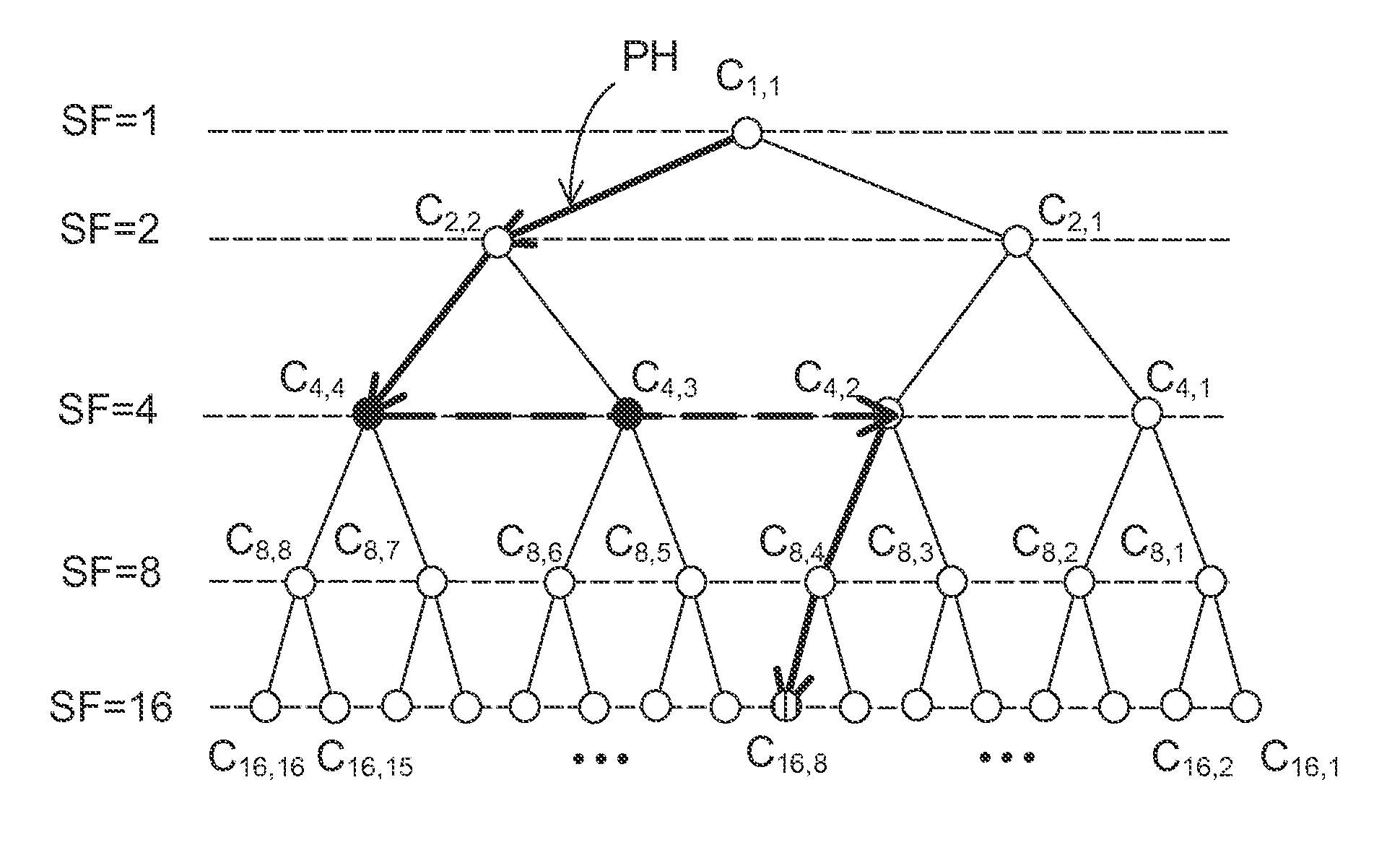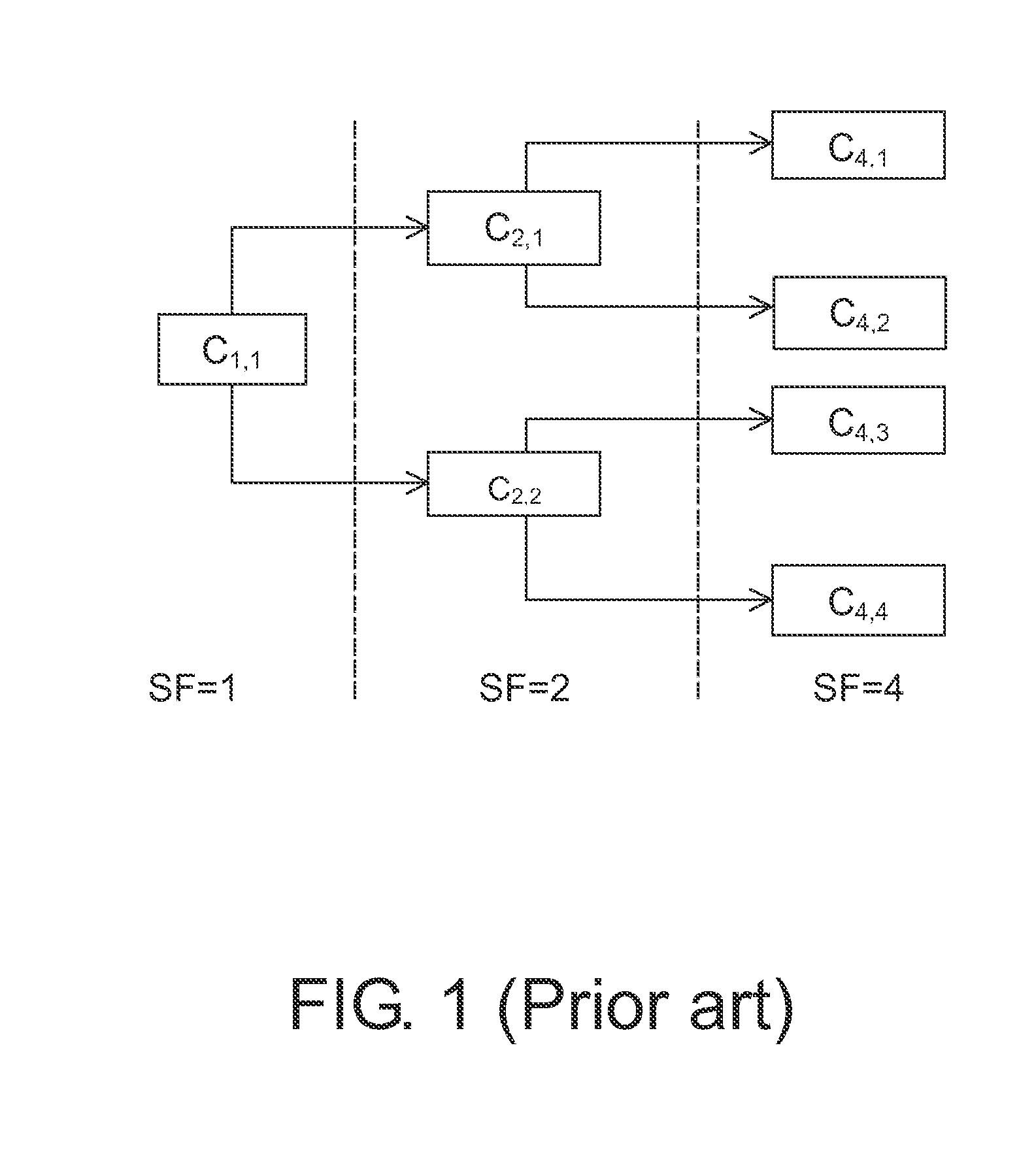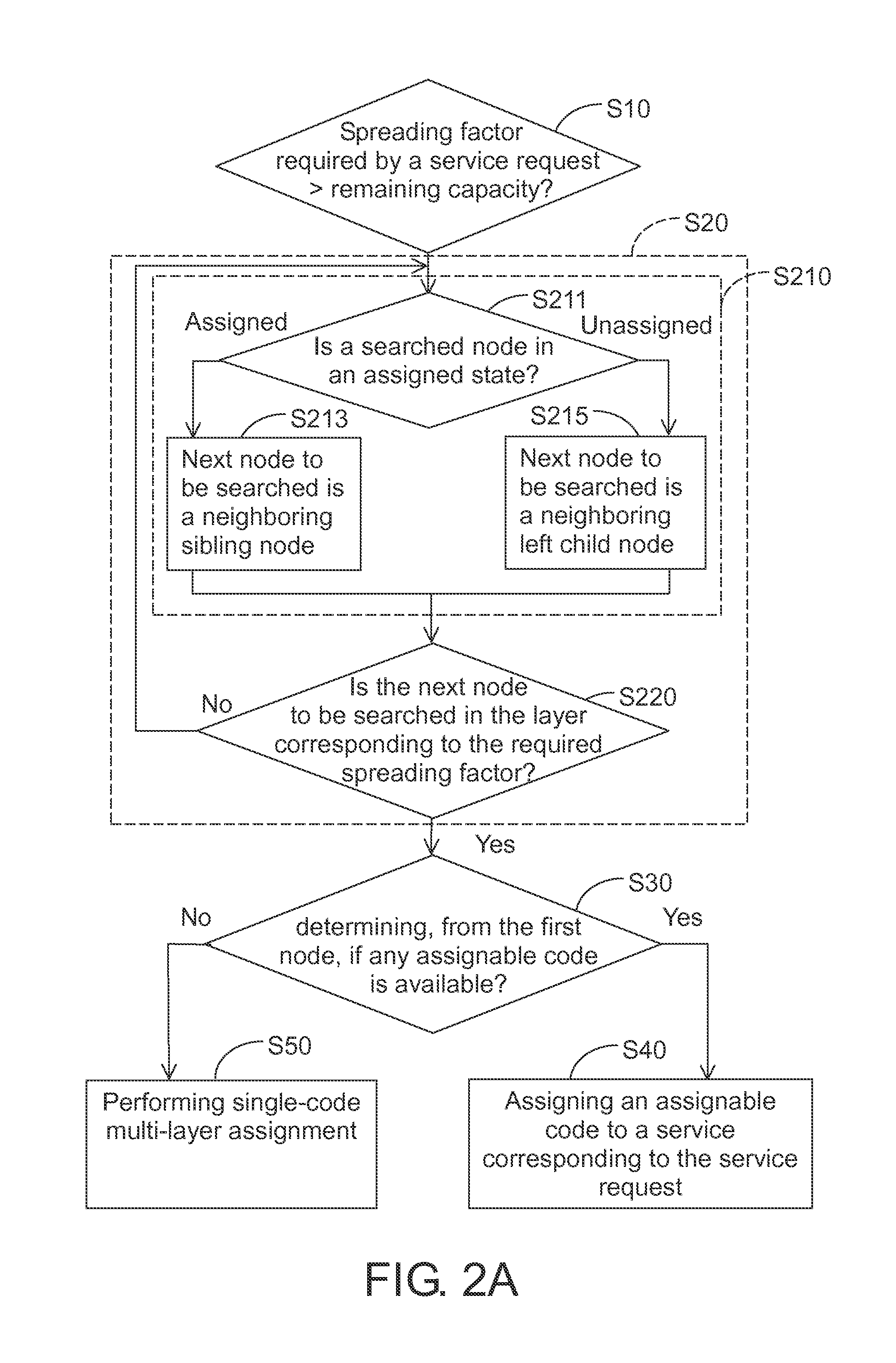Downlink orthogonal variable spreading factor code assignment method and base station system using the same
- Summary
- Abstract
- Description
- Claims
- Application Information
AI Technical Summary
Benefits of technology
Problems solved by technology
Method used
Image
Examples
Embodiment Construction
[0024]Embodiments of a downlink orthogonal variable spreading factor (OVSF) code assignment method, and a base station as well as a code division communication system using the same shall be described.
[0025]In the embodiment below, assigning a single OVSF code for a connection request in a WCMDA system for UMTS is taken as an example. As the OVSF code serves as a downlink channelization code, a radio network controller in charge of assigning downlink services is employed to perform code assignment when a base station replies to an access request coming from a terminal. In other embodiments, 3G protocols such as TD-SCMDA mobile communications standards or communication techniques adopting spread spectrum techniques can also be implemented based on their requirements of the embodiments.
[0026]Referring to FIG. 1, in this embodiment, nodes of a code tree may be categorized into three states including assigned, unassigned and forbidden. In code assignment, the states of the nodes of the ...
PUM
 Login to View More
Login to View More Abstract
Description
Claims
Application Information
 Login to View More
Login to View More - R&D
- Intellectual Property
- Life Sciences
- Materials
- Tech Scout
- Unparalleled Data Quality
- Higher Quality Content
- 60% Fewer Hallucinations
Browse by: Latest US Patents, China's latest patents, Technical Efficacy Thesaurus, Application Domain, Technology Topic, Popular Technical Reports.
© 2025 PatSnap. All rights reserved.Legal|Privacy policy|Modern Slavery Act Transparency Statement|Sitemap|About US| Contact US: help@patsnap.com



